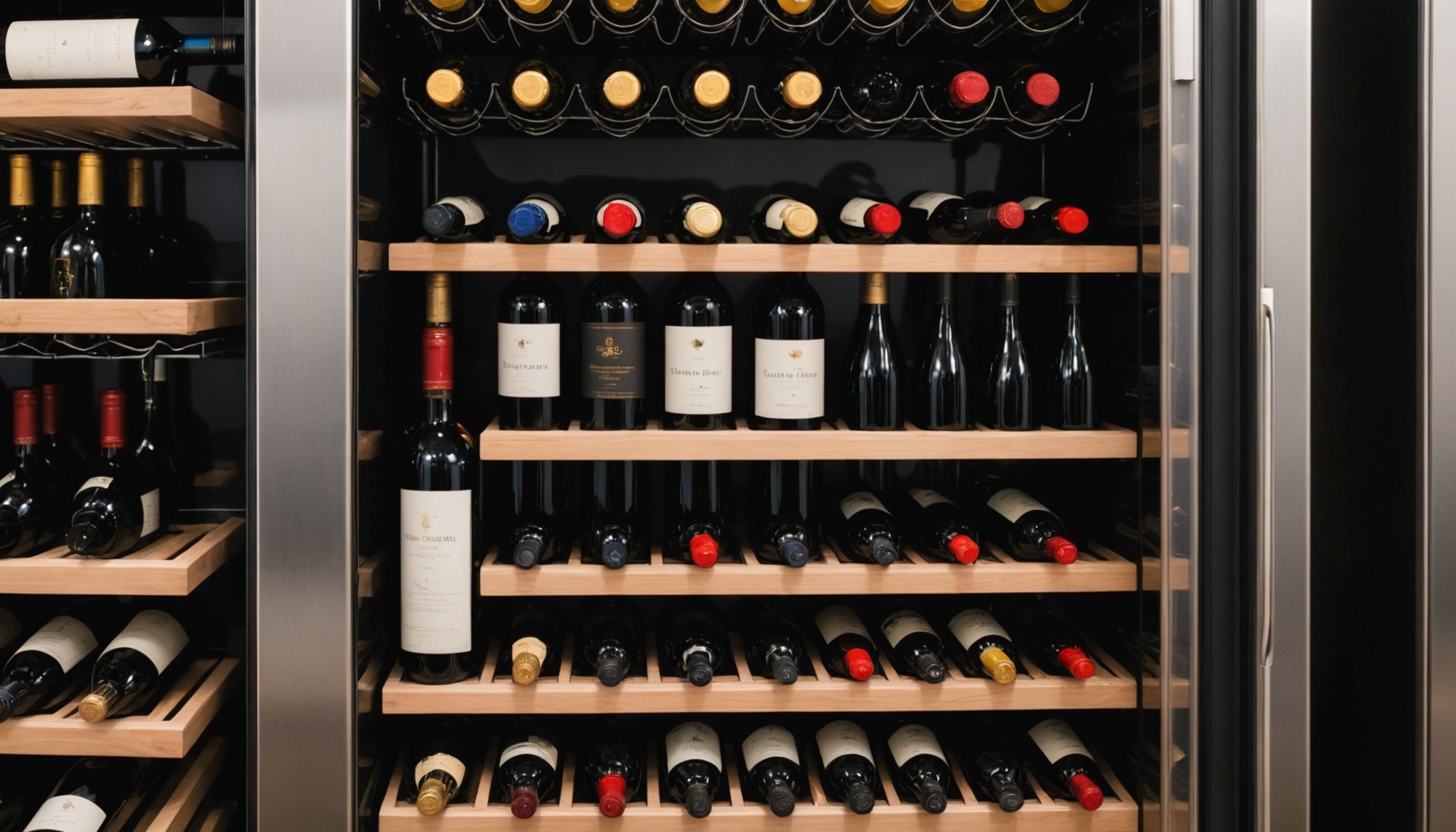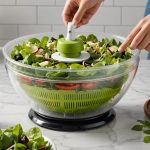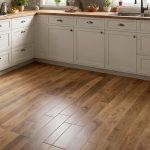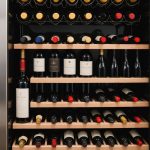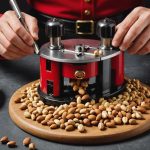Wine enthusiasts know that preserving every bottle's unique character requires more than just the right temperature—humidity plays a pivotal role as well. The integrity of corks depends on moisture levels, protecting wines from oxidation and spoilage. This guide will unravel the essential humidity levels for various wine types, offering practical tips to maintain an ideal environment in your wine fridge. Enhance your collection’s longevity and taste with expert insights tailored for every wine lover.
Understanding Humidity Levels in Wine Storage
Humidity levels play a pivotal role in wine preservation.
Also read : Essential Nutcracker Features for Effortless Cracking of Small and Large Nuts
Importance of Humidity in Wine Storage
Maintaining optimal humidity levels is crucial for effective wine storage. It ensures the preservation of wine quality by protecting the cork's integrity. A well-preserved cork prevents air from entering the bottle, thereby safeguarding the wine from oxidation. This is vital for wine preservation, as oxidation can significantly alter the wine's flavor and aroma.
How Humidity Affects Wine Quality
Humidity levels directly impact the quality of wine. Insufficient humidity can lead to cork drying and shrinkage, resulting in spoilage. Conversely, excessive humidity can cause mold growth, affecting both the cork and the wine's label. This balance in wine storage is essential to maintain the wine's intended taste and longevity.
Have you seen this : Savor the sweetness: tinned cream dessert delights
Recommended Humidity Levels for Different Wine Types
Different wines require specific humidity levels for optimal storage. Here is a brief overview:
- Red Wines: 50% – 70% humidity
- White Wines: Slightly lower within the same range
- Sparkling & Dessert Wines: Similar conditions with special care
By understanding the importance of humidity levels in wine storage, enthusiasts can ensure effective wine preservation, allowing their collections to age gracefully and retain their intended flavors. This knowledge empowers wine lovers to make informed decisions about their storage environments.
Optimal Humidity Levels for Different Wine Types
Understanding the specific needs of each wine type enhances preservation.
Humidity Requirements for Red Wines
Red wines thrive in humidity levels between 50% and 70%. This range ensures that the cork remains moist, preventing oxidation. The robust nature of red wines benefits from this controlled environment, maintaining their complex profiles over time.
Humidity Specifications for White Wines
For white wines, maintaining slightly lower humidity within the same range is beneficial. White wines are generally more delicate, making them susceptible to storage conditions. Consistent humidity helps preserve their crisp and refreshing characteristics, ensuring longevity.
Humidity Needs for Sparkling Wines and Dessert Wines
Sparkling wines and dessert wines have unique storage needs. Sparkling wines, with their effervescence, require the same humidity levels as reds and whites but need extra care to prevent cork shrinkage. Dessert wines, often sweeter and thicker, should also follow these guidelines to ensure flavor integrity.
- Red Wines: 50% – 70% humidity
- White Wines: Slightly lower within the same range
- Sparkling & Dessert Wines: Similar conditions with special care
By tailoring storage conditions to each wine type, enthusiasts can savor the full potential of their collections. This approach not only preserves the wine types but also enhances the tasting experience.
Practical Tips for Maintaining Humidity in a Wine Fridge
Achieving the ideal storage environment for your wine collection.
Choosing the Right Wine Fridge
Selecting a wine fridge with effective humidity control is vital for preserving your wine. Look for models with adjustable humidity settings and built-in humidity monitors. These features help maintain the optimal environment, preventing cork damage and spoilage. A wine fridge designed for consistent humidity will ensure your collection ages gracefully.
Using Humidity Monitors and Hygrometers
Incorporating humidity monitors and hygrometers into your wine storage setup is essential. These tools provide accurate readings, allowing you to keep track of the humidity levels. Regular monitoring helps identify any deviations, enabling timely adjustments to maintain the desired conditions. Consider models with digital displays for easy readability and user-friendly interfaces.
Tips for Adding Moisture to Wine Fridges
Maintaining the right humidity often requires adding moisture to your wine fridge. Here are some practical tips:
- Place a shallow dish of water inside the fridge to increase humidity.
- Use a damp sponge or cloth to introduce moisture.
- Ensure the fridge is not overcrowded to allow proper air circulation.
By following these tips, you can effectively manage humidity levels in your wine fridge, safeguarding your wines' flavor and integrity. This proactive approach ensures your collection remains in peak condition, ready to be enjoyed at its best.
Consequences of Improper Humidity Levels
Exploring the impact of humidity on wine storage and spoilage.
Effects of Low Humidity on Wine Corks and Oxidation
Low humidity in wine storage can be detrimental. When the humidity level drops below the optimal range, corks may dry out and shrink. This shrinkage compromises the seal, allowing air to enter the bottle. The result is oxidation, which can spoil the wine, altering its flavor and aroma. Proper humidity control is essential to prevent this.
Risks of High Humidity, Including Mold and Labeling Issues
Excessive humidity also poses significant risks. High humidity levels can lead to mold growth, which not only affects the cork but also damages the wine labels. Mold can degrade the visual appeal of a wine collection and potentially contaminate the cork, affecting the wine's quality. Maintaining balanced humidity is crucial to avoid these issues.
Common Signs of Humidity-Related Wine Spoilage
Recognizing signs of improper humidity can help prevent wine spoilage. Look for:
- Dry or cracked corks indicating low humidity
- Moldy corks or labels suggesting high humidity
- Off-flavors or aromas pointing to possible oxidation
By identifying these indicators, wine enthusiasts can take corrective action to preserve their collection. Monitoring and adjusting the humidity levels are key to ensuring the longevity and quality of stored wines.
Comparing Wine Storage Solutions
Exploring different options for preserving your wine collection.
Traditional Wine Racks vs. Wine Fridges
Traditional wine racks offer simplicity and affordability. They are ideal for short-term storage in a stable environment. However, they lack temperature and humidity control, which can compromise wine quality over time. In contrast, wine fridges provide precise control over storage conditions, preserving both flavor and aroma. They are more expensive but offer long-term benefits by maintaining optimal humidity levels.
Benefits of Temperature and Humidity-Controlled Wine Cabinets
Wine cabinets combine the best of both worlds. They offer temperature and humidity control, ensuring wines age gracefully. These cabinets protect against environmental fluctuations, making them ideal for serious collectors. Additionally, they offer aesthetic appeal, often enhancing home decor. While costlier than wine racks, their ability to maintain consistent conditions makes them a worthwhile investment.
Cost Considerations for Different Wine Storage Options
When choosing between wine storage solutions, consider the following cost factors:
- Wine Racks: Low cost, limited protection
- Wine Fridges: Moderate to high cost, excellent control
- Wine Cabinets: High cost, superior preservation
Selecting the right wine storage solution depends on your budget and storage needs. By evaluating the pros and cons of each option, enthusiasts can make informed decisions to safeguard their wine collections.
Enhancing the Wine Experience with Proper Humidity
Unlocking the full potential of your wine collection
Impact on Flavor and Aroma
Humidity plays a crucial role in preserving the flavor and aroma of wine, essential elements of a memorable wine experience. Maintaining optimal humidity levels ensures that corks remain intact, preventing oxidation which can dull a wine's quality. Wines stored in the right conditions retain their nuanced aromas and rich flavors, enhancing the overall enjoyment.
Aging Potential of Wines
The aging potential of wines is significantly influenced by humidity levels. Proper humidity helps maintain cork integrity, allowing wines to age gracefully. This process develops complex flavors, crucial for a superior wine experience. Wines that age well offer deeper, more intricate profiles, elevating their quality and the enjoyment they provide.
Tips for Serving Wine
To optimize the wine experience, serve wine under conditions that highlight its preserved flavor and aroma. Here are some tips:
- Ensure wine is stored at the right humidity before serving.
- Allow red wines to breathe for enhanced aroma.
- Serve whites slightly chilled to accentuate their crisp flavor.
By focusing on these aspects, wine enthusiasts can ensure that each bottle delivers its full potential, offering a rich and satisfying wine experience. Proper humidity management is not just about storage—it's about savoring the art of wine.
Visual Aids for Understanding Wine Humidity Levels
Enhancing wine storage education through visual tools
Importance of Visual Aids in Wine Storage Education
Visual aids such as wine humidity charts and infographics are invaluable tools for wine enthusiasts. They provide clear, concise information on maintaining optimal humidity levels for different wines. By visually depicting the effects of humidity, these aids simplify complex concepts, making them accessible and easy to understand.
Sample Charts Depicting Ideal Humidity Levels for Various Wines
Wine storage diagrams often include charts that outline the ideal humidity levels for different types of wine. These charts serve as quick references, helping users ensure their storage conditions are within the recommended range. For example, a chart might show:
- Red Wines: 50% – 70% humidity
- White Wines: Slightly lower within the same range
- Sparkling & Dessert Wines: Similar conditions with special care
Infographics Summarizing Humidity Effects on Wine
Infographics are powerful tools that summarize how humidity impacts wine quality. They can illustrate the risks of improper levels, such as cork shrinkage or mold growth. A well-designed infographic can convey this information at a glance, reinforcing the importance of proper wine storage.
"A picture is worth a thousand words"—this adage holds true in wine storage, where visual aids enhance understanding and decision-making.
Expert Insights and Recommendations
Professional perspectives on optimizing wine storage through humidity control
Sommeliers' Views on Humidity and Wine Storage
Sommeliers emphasize the importance of humidity in wine storage. According to wine experts, maintaining the correct humidity prevents cork degradation, which is crucial for preserving wine quality. A well-maintained storage environment allows wines to age gracefully, enhancing their flavors and aromas. As one sommelier notes, "Proper humidity is the silent guardian of a wine's integrity."
Manufacturer Recommendations for Wine Storage
Wine storage manufacturers offer specific guidelines to ensure optimal humidity levels. They recommend using advanced storage solutions like wine fridges and cabinets equipped with humidity controls. These products are designed to maintain consistent humidity, protecting the cork and preventing spoilage. Manufacturers often provide detailed instructions to help users set and monitor the ideal conditions for their collections.
Tips for Novice Wine Collectors
For those new to wine collecting, expert tips can be invaluable. Here are some practical suggestions:
- Use a digital hygrometer to monitor humidity levels.
- Store wines in a dedicated wine fridge with adjustable humidity settings.
- Regularly inspect corks for signs of shrinkage or mold.
By following these professional advice and recommendations, novice collectors can ensure their wines are stored under optimal conditions, preserving their value and enhancing their enjoyment.
Frequently Asked Questions about Wine Humidity
Exploring common inquiries and solutions for optimal wine storage
Addressing Common Concerns about Humidity and Wine
Many wine enthusiasts often ask, "How does humidity affect wine storage?" Humidity plays a pivotal role in preserving the cork's integrity, preventing oxidation. A well-maintained humidity level ensures that the cork remains moist, safeguarding the wine's quality.
Clarifying Misconceptions Regarding Wine Storage
A frequent misconception is that humidity levels need to be extremely high. In reality, maintaining a balanced humidity between 50% and 70% is sufficient. Excessive humidity can lead to mold growth, which can damage both corks and labels.
Providing Actionable Solutions to Typical Humidity Issues
To address common humidity issues, consider these steps:
- Use a digital hygrometer to monitor humidity levels accurately.
- If humidity is low, place a shallow dish of water in the storage area.
- Ensure the storage space is not overcrowded to allow proper air circulation.
"Proper humidity is the silent guardian of a wine's integrity," as one expert notes. By understanding and managing humidity, wine lovers can ensure their collections remain in peak condition. This proactive approach not only preserves the wine's flavor and aroma but also enhances the overall wine-tasting experience.

